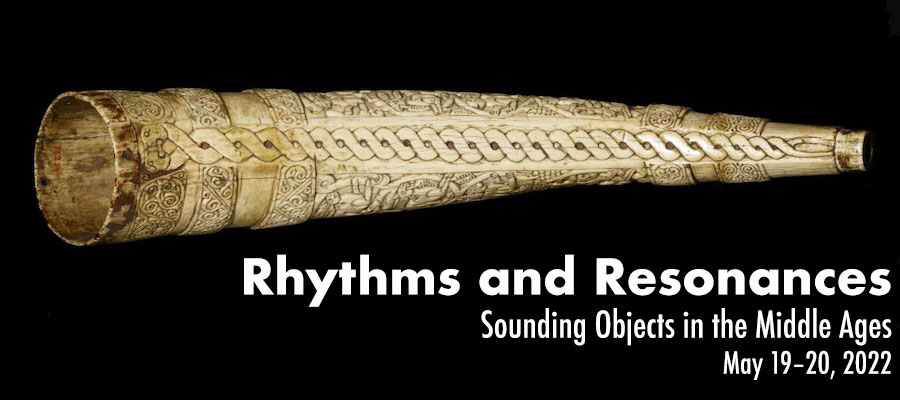Rhythms and Resonances. Sounding Objects in the Middle Ages, German Center for Art History – DFK Paris and online, May 19–20, 2022
According to ancient legend, one day Pythagoras was walking past a forge and heard four hammers pounding irons on an anvil. The sound of the instruments of varying weights and the resulting divergent rhythms and intervals are said to have led him to a theory of harmony and, in turn, to the foundation of music theory. The story circulated widely in the Middle Ages in writings on music theory, as well as in songs and pictorial representations.
Medieval objects that either sound or symbolize sound find their place within historically and culturally inflected notions of the interconnectivity of earthly life and cosmic harmony. The medievalist Jean-Claude Schmitt (Les rythmes au Moyen Âge, Paris 2016) and the sociologist Hartmut Rosa (Resonance: A Sociology of Our Relationship to the World, Cambridge 2019) have recently shown, in different ways, how concepts of rhythm and resonance are applicable to comprehensive considerations of human society. In this sense, rhythmically moving and vibrating objects that, in their reception, generate physical and cognitive resonance can claim a vital role in and make a decisive contribution to shaping, experiencing, and negotiating social and world orders.
This interdisciplinary conference is dedicated to objects from the medieval period that produce music, repetitive sounds, or tones – from bells and organs, musical instruments, and sounding automata to the coins in one’s wallet. Also crucial is the question of how such sounds are “echoed” in ornament, images, and texts. In what terms might we describe and understand the relationship of object-generated sound to sight, touch, and other senses, as well as to voice and narration? In objects and architectures, how are sounds designed, staged, and received through movements and rituals? What intentions and meanings are conveyed in this way?
Submissions are welcome from history and art history, literary studies, musicology, cultural anthropology, and the fields of Sound History and Sensory Studies.
